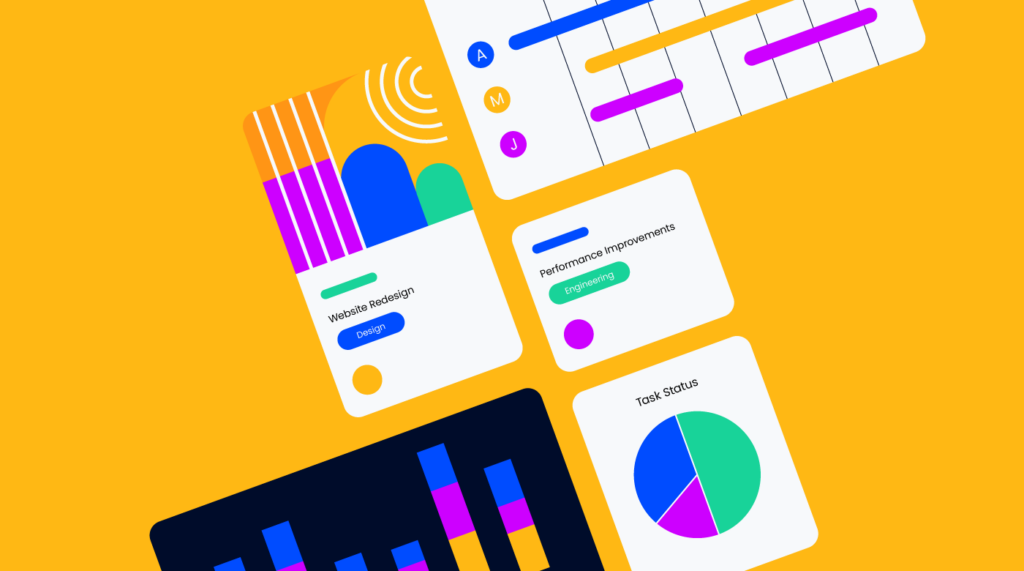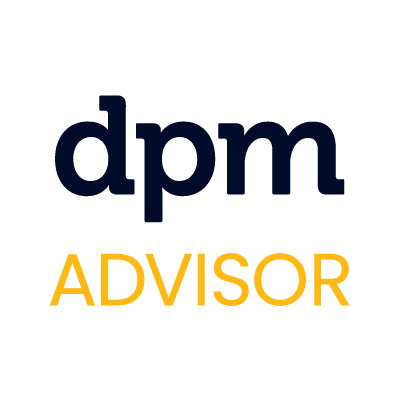Project management software helps project managers efficiently plan projects, manage resources, visualize data, and generate reports, making it easier to keep projects on time, within budget, and aligned with goals.
It's an essential tool for enhancing team collaboration, reducing stress, and ensuring successful project outcomes.
Are you a project manager looking for ways to make your job easier and more effective? This article breaks down the various uses of project management software, showing how it can be a game-changer in streamlining your processes, enhance team collaboration, and keep your projects on track
Top 5 Use Cases For Project Management Software
Here are some of the use cases that project management software offers for your project, team, and organization.
1. Planning Projects
One of the main use cases of any project management software is project planning, or the ability to separate a project into steps and goals.
One important note here is that the project management software you choose should match the project management methodology at your organization.
The most common project management methodologies include:
- Waterfall: The waterfall approach is one of the simplest methodologies for project management—each step of a project is broken down sequentially, and team members must complete its steps one at a time. This method works best if your project goals, circumstances, and budget are not subject to change throughout the life cycle of the project.
- Agile: This approach was created to allow teams to continually revise projects midstream. It typically involves short phases of work followed by analysis and adaptation. Agile project management has paved the way for other popular methodologies like Kanban, Scrum, lean, and extreme programming. It works best for projects that are subject to change and need to move quickly.
2. Managing Resources
Resource management involves tracking the people and equipment needed to complete a project. With resource management, you can compare available resources with demand and allocate them to ensure that projects are completed on time and within budget.
Some project management software offers resource management capabilities, while others can be integrated with the resource management software of your choice.
3. Visualizing Data
One of the benefits of project management software is that it provides an easy way to visualize your project plan, goals, and needs at any given point in the process. Good project management software should offer these visualization tools:
- To do lists: The OG visualization. Any project management software worth its salt should be able to display a list of project activities.
- Kanban boards: Being able to organize project activities into a board or column view is particularly important when you’re working on agile projects. You can categorize project tasks by status or ideally by custom categories that you choose.
- Gantt charts: A Gantt chart is essentially a bar chart that shows the different tasks within a project plan against the time needed to complete each step. With a Gantt chart, you can visualize how long a task will take, where tasks overlap, and the start and end dates of the project.
- Project calendars: Built-in calendars allow you to selectively view only the project information you need at that moment. For example, a project calendar will allow you to see a high-level view of tasks by day, week, month, and year. Calendars include other useful features, such as adjusting timelines and including related files and conversations so that you can jump from the calendar right into work.
4. Generating Reports
Once you’ve got your project management solution up and running, how do you track project output? The answer: a project management report.
Project management reports are extremely helpful because they help track project progress. They are also essential for updating stakeholders and team members on project timeline and potential blockers.
Information Included in a Project Report
Every report should include the following:
- Accomplishments, including tasks that have been completed so far
- Updates about the status of ongoing tasks
- Blockers that threaten to impede project progress
- Financial data or other metrics that showcase project health
- Information about when the report was last updated.
Project management reports should always answer the questions that are foremost in stakeholders’ and team members’ minds: Is the project progressing according to plan? What’s the next step? What’s the budget status? Are there any issues that need attention?
Types of Reports Project Management Tools Can Generate
A good project management tool can slice and dice your data in several ways to provide the information you’re looking for. Here are several types of reports that project management tools should be able to generate:
- Status report: This type of project report provides a big-picture update that anyone can look at for a quick overview of project progress. Status reports focus on uncovering issues with project planning. They show whether you’ve gone off course or fallen behind schedule and how to fix issues.
- Risk report: This kind of report shows any risks the project is facing and categorizes them in order of urgency.
- Utilization report: These reports show team members’ availability and schedules and how team members are spending their time on a project. This type of report can help you figure out where processes need to be more efficient.
- Variance report: To avoid “mission drift” on your project, you need variance reports. It’s surprisingly easy to veer away from your targets, so this report helps you get back on track by showing your team’s progress against project deliverables and objectives.
Why Reporting Is Essential to Project Management
Every project manager must generate reports as they’re managing projects. Here are some benefits to project management reporting:
- A project reporting tool keeps things on track. With all the moving parts, collaboration, and stress that come with every project, project managers know it’s easy to let projects veer away from their original targets—or simply stagnate. Regular project reports help you stay on course and provide solutions when you run into problems.
- A project reporting tool provides accountability. Every project will run into issues. Without some form of accountability, these issues could derail the project. A project reporting tool shows exactly how a project’s progress compares to its goals and where improvements need to happen as the team is managing tasks.
- A project reporting tool allows visibility. Stakeholders and team members must know how projects are progressing. Project reports provide clear, factual data about a project’s status, progress, and problems to ensure optimal collaboration.
5. Tracking Personnel
Some of the most important functions of a project management software tool are tracking the time that team members are spending on each aspect of the project, personnel availability, and whether team members are delivering properly.
Time tracking features within project management systems help identify whether tasks are taking too long, set time expectations for future projects, and provide data for time-cost analyses.
The most user-friendly time tracking features simply let employees hit a button to start and stop tracking their time. Depending on the software, employees may be able to categorize their time by project, department, client, and other useful descriptors.
Project management software that includes time tracking ensures team members are being judicious with their time and resources. There are also a variety of standalone software for time tracking that you can check out.
Need expert help selecting the right Project Management Software?
If you’re struggling to choose the right software, let us help you. Just share your needs in the form below and you’ll get free access to our dedicated software advisors who match and connect you with the best vendors for your needs.
10 Benefits To Using Project Management Software
Once you learn about the features of project management software and the advantages that these tools and apps offer, you’ll realize you’ve got to make the switch, because it’ll transform your projects and your team’s effectiveness.
Project management software:
- Improves collaboration by creating a centralized location for project team communication
- Clarifies project objectives, tasks, and deliverables
- Sets and visualizes the project plan and measures progress against it
- Allocates the project team’s resources effectively
- Offers accountability for the team
- Improves project budget and cost tracking, minimizing the risk of overruns
- Helps the team hit their deadlines and project milestones
- Provides visibility for external stakeholders
- Automates repetitive project tasks
- Integrates project data with other tools
In short, it helps your team deliver the tasks they commit to. It helps keep them on track. And it helps you, the project manager, sleep better at night knowing where the project is at.
Read more about the benefits of project management software here.



